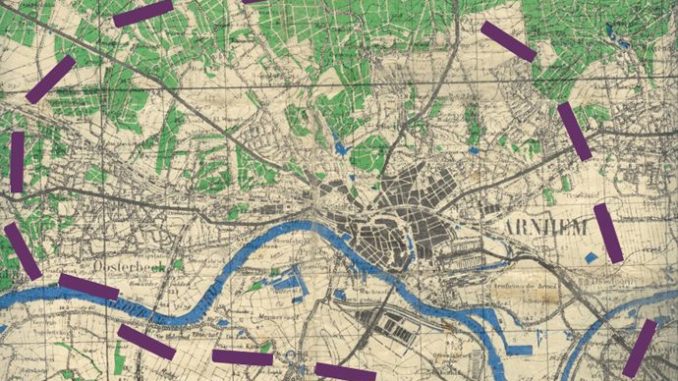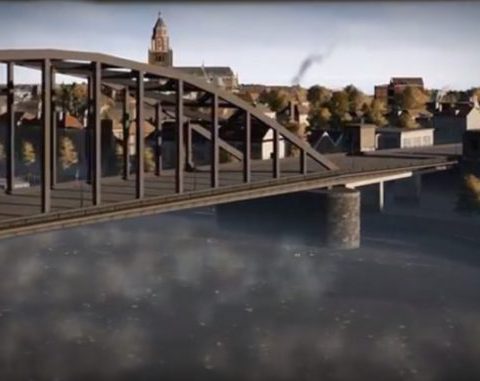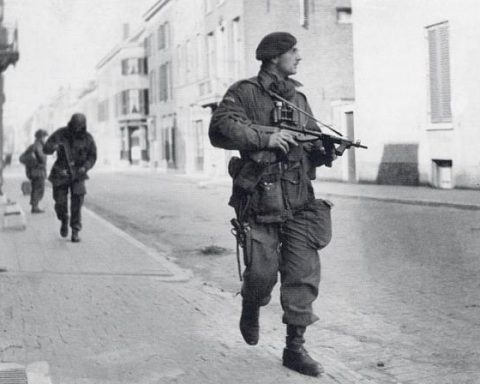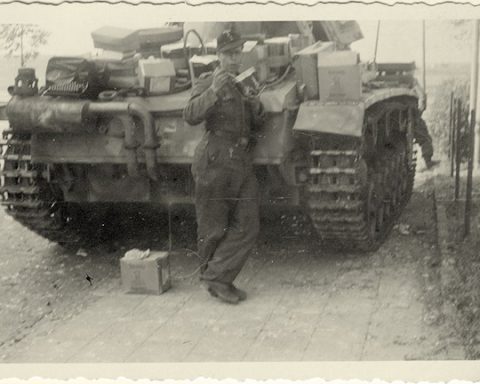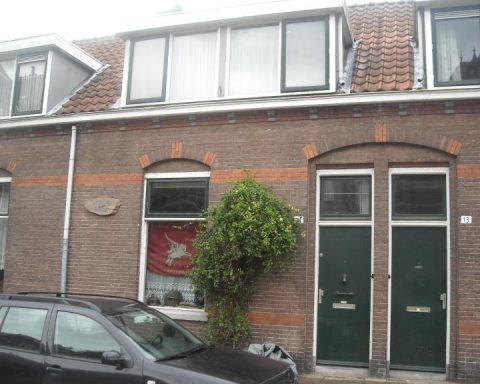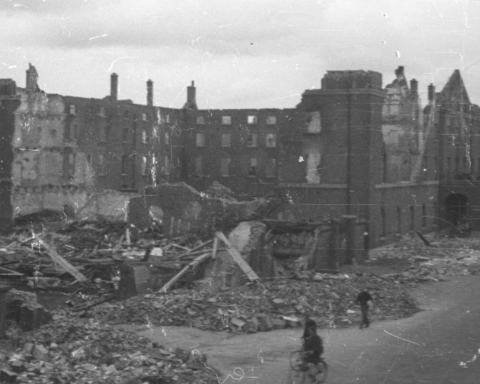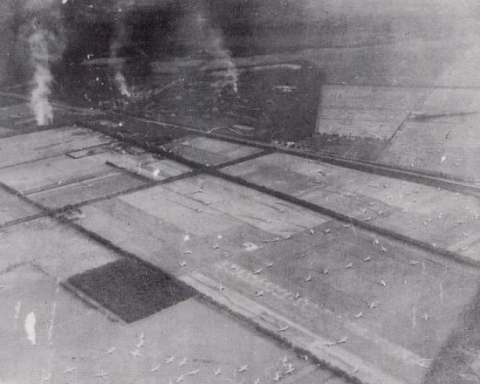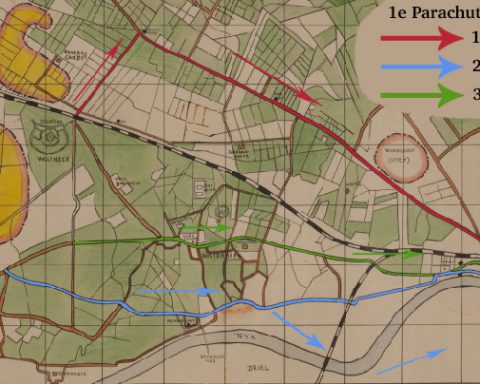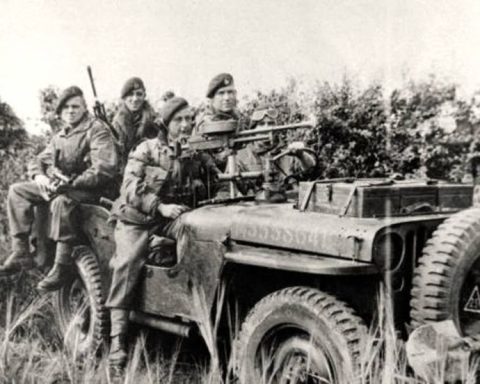The Battle of Arnhem was part of the large allied operation Market Garden. Bridges in the Netherlands had to be secured via airborne landings. Allied ground troops would then drive via a corridor from Eindhoven to Arnhem.
After that, the Allies could easily enter Germany from Arnhem, without having to fight the feared German Siegfried Line.
British Marshal Bernard Montgomery’s plan was bold, daring and risky. Nevertheless, the cautious Allied commander Dwight Eisenhower agreed to the plans in early September. And he had good reasons for that.
Germans in chaos
After the difficult battle after D-Day in June and July in Normandy, the Allies managed to liberate all of France and most of Belgium in August. During that period the Russians had virtually destroyed the German Army Group Center.
The German losses on both the Western and Eastern Fronts were enormous and the German army was retreating on all fronts.
In early September 1944, the Allied High Command was convinced that the German army was in chaos. ‘Mad Tuesday’ in the South of the Netherlands only confirmed that picture. With a quick decisive attack, the German defense could be finally broken, it was thought. The war could then be over by Christmas 1944.
Not one, but four bridges
To take advantage of the momentum, the plans for Operation Market Garden were put together in a few weeks. In retrospect, it can be stated that the haste that accompanied the plan did not work well. But it is always easy afterwards.
The Allies were right that the German army was in chaos in early September 1944. But because the Allies did not engage in major battles with the Germans in September, partly due to long supply lines from France, the well-organized Germans had their affairs in order again a few weeks later.
And that has strongly influenced the outcome of the Battle of Arnhem.
Arnhem was the main target of Operation Market Garden, but the Rhine bridge was not the only main target for the British airborne troops, as many people think.
The original plan was far more ambitious than just capturing and defending the Rhine Bridge. The British airbornes should conquer not one, but four different bridges around Arnhem.
In the original attack plans, the British airborne troops had to secure three other bridges in Arnhem and surroundings in addition to the Rhine Bridge.
The railway bridge at Oosterbeek, the ship bridge in the center of the city and the bridge over the IJssel river at Westervoort should also be captured and defended by the British troops, until they were relieved from the south by the Allied ground troops.
Perimeter
In order to achieve those four goals, it was imperative that the airbornetroops did not only advance to these four bridges. The British plan was to lay a perimeter around Arnhem.
The west side of that perimeter would be west of Oosterbeek. On the north side it was planned that the British would defend the area north of the Schelmseweg, close to the german controlled airfield of Deelen. The area around Velp would form the northeast side of the British zone. Westervoort, east of the IJssel river would form the east side of the perimeter.
The south side of the perimeter had to be secured via the railway bridge at Oosterbeek, the ship bridge and the Rhine bridge.
Expected German counter-attacks had to be repulsed along this perimeter. When the pressure became too great, the British still had plenty of opportunities to give up houses and streets and slowly retreat toward the bridges.
In addition, the British would receive reinforcements from the Polish airborne troops two days after the first landings. The Polish troops would originally be dropped along with the British paratroopers on Sunday, September 17.
However, that plan was canceled when it was discovered that there were simply too few transport aircraft to drop all troops around Arnhem at the same time.
There were not even enough planes for all British troops. Part of the British paratroopers therefore landed on Monday September 18.
Out of necessity, it was decided to drop the Polish paratroopers with an extra “lift” on Tuesday 19 September. However, due to bad weather in England, the Poles could not be deployed until Thursday 21 September.
If Market Garden’s ground operation were going according to plan, the British in Arnhem would be relieved sometime between Tuesday, September 19 and Thursday, September 21 by the allied ground troops from the south. That was the idea.
For the landings near Arnhem, the Allies had 1st Airborne Division supplemented by other troops and the gliders’ pilots. In total, the total size of the troops consisted of approximately 13,000 well-trained soldiers, much of whom had gained combat experience in Africa and Italy.
101st Airborne
What few people know is that the 1st Airborne Division was not the first choice for the Arnhem landings. In an earlier version of the airborne plan, the US 101st Airborne Division would land near Arnhem. This division, internationally known for the TV series “Band of Brothers”, had performed above expectations in Normandy and their experience would be useful in Arnhem, it was thought.
Since the plan for Market Garden came from the British, it was politically better to give Arnhem, the main prize of the operation, to the British paratroopers. The 101st Airborne was assigned the area around Eindhoven.
Plan after the landings
After the landings in the drop zones at Wolfheze, the British would advance in three groups towards the predetermined targets: “Leopard”, “Tiger” and “Lion”.
“Leopard” should occupy the area north of Arnhem around Burgers’ Zoo. Leopard would move up via Amsterdamseweg via Schelmseweg. Tiger would advance through the Utrechtseweg through Oosterbeek, right through the center of Arnhem to the Rhine bridge. Then it would continue to advance in the direction of Westervoort.
Lion would take a southern route along the north bank of the Rhine. “Lion” was responsible for the south side of the British zone and should capture three bridges. First the railway bridge at Oosterbeek, then the ship bridge in the center of the city and finally the Rhine bridge.
Great German resistance was not expected in and around Arnhem. “Children and old men”, the paratroopers were told. The Allies did not expect more than that. The British soldiers discovered immediately after the landings that the Allied high command was wrong.
In and around Arnhem, thousands of German soldiers were stationed. That was far more resistance than expected. Shortly after the landings, there were already more German soldiers around Arnhem than English troops.
Fierce fighting
Due to a combination of many different factors, it all went very differently than the planners had hoped.
“Leopard” and “Tiger” soon engaged in heavy fighting with German troops after the landings. As a result, nothing ever came of an advance towards the original goals.
“Lion,” led by Colonel John Frost, initially avoided fighting the Germans as much as possible. Only at the railway bridge in Oosterbeek did Frost’s troops encounter serious German resistance.
The traces of this are still visible at the railway viaduct on the Benedendorpseweg. The bullet impacts can still be seen in the stones of the viaduct.
After the British eliminated German resistance at the railway bridge with some difficulty, Frost sent some of his men across the railway bridge. Just then the Germans blew up the bridge.
Frost and his men then moved on via the Klingelbeekseweg towrds the center of Arnhem. Because at that time in Lombok at the Elisabeth Gasthuis hospital there was fighting between other British soldiers and German troops, Frost decided to guide his men through the gardens on the Klingelbeekseweg and the Onderlang to the center. From there, the British soon reached the ship bridge.
However, the Germans had sailed away part of the ship’s bridge immediately after the landings. After the blown up railway bridge, Frost had to cross this bridge off his list of targets as well.
However, the main purpose of his assignment was within reach. Around 8 p.m. on Sunday September 17, Frost, together with about 700 men, reached the Rhine bridge. It was not defended at the time. The Germans did not expect the British to sneak along their line of defense around the Elisabeth Gasthuis hospital.
Frost realized the moment he reached the Rhine bridge that nothing of the original British attack plans would come to pass.
He set up a line of defense around the northern driveway in hopes that the remaining British troops would still be able to reach the bridge from the west.
For two days, his men had to defend the bridge. Two days. After that, the ground troops would cross the bridge from the south and the battle of Arnhem would still be won. It turned out differently. Despite a heroic battle at the bridge and in Oosterbeek, the remaining British paratroopers had to be withdrawn eight days after the landings. Arnhem was a bridge too far.

